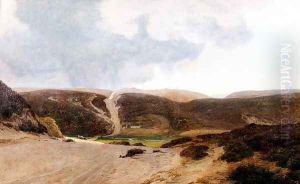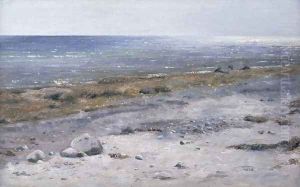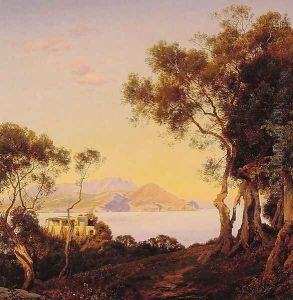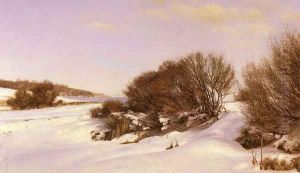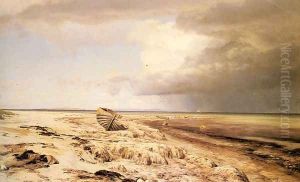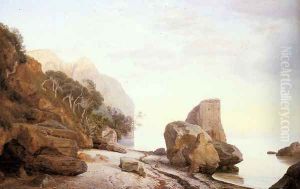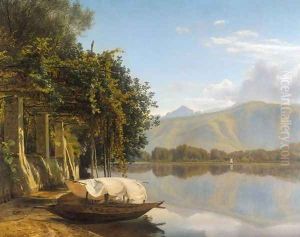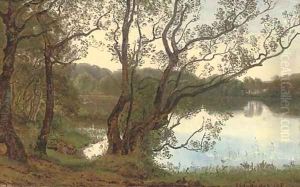Janus Andreas Bartholin La Cour Paintings
Janus Andreas Bartholin La Cour was a Danish painter born on March 23, 1837, in Ollerup, a small village in Denmark. He is best known for his landscape paintings that often depict the serene and pastoral settings of the Danish countryside. La Cour’s work reflects the influence of the Danish Golden Age of painting, a period characterized by a focus on beauty, light, and the simplicity of the country’s natural surroundings.
Before becoming an artist, La Cour pursued theological studies, following in the footsteps of his father, who was a clergyman. However, he soon discovered his true passion lay in painting, and he began his art education at the Royal Danish Academy of Fine Arts in Copenhagen. He studied under the guidance of Wilhelm Marstrand, a renowned Danish painter, and P.C. Skovgaard, a landscape artist who had a significant influence on La Cour’s own style.
Throughout his career, La Cour remained dedicated to landscape painting, often capturing the tranquil scenes of rural Denmark. His works are characterized by a meticulous attention to detail and a harmonious palette that conveys the changing seasons and the varied moods of nature. He had an ability to depict the soft, diffused light of the Nordic landscape with a quiet, poetic sensibility, which earned him a respected place among Danish landscape painters.
La Cour exhibited at Charlottenborg Spring Exhibition in Copenhagen, and his paintings were well-received, garnering him recognition and a modest level of success during his lifetime. Despite this, he lived a relatively quiet life, devoted to his art and avoiding the trappings of fame. He never married, and after his death on November 21, 1909, in Copenhagen, he left behind a legacy of artwork that continues to be admired for its peacefulness and beauty.
Today, La Cour’s paintings can be found in various museums and private collections, where they continue to be appreciated for their serene depiction of the Danish landscape. His work is an important part of Denmark’s cultural heritage and serves as a window into the country’s past, capturing the essence of an era that took pride in the simple elegance of its natural environment.
